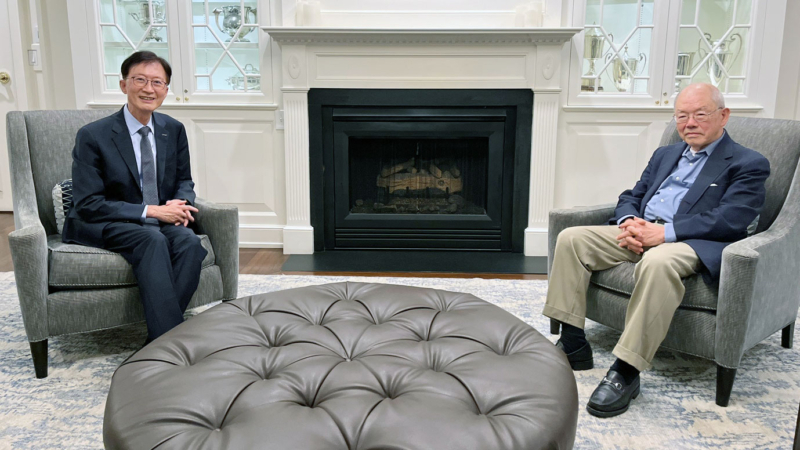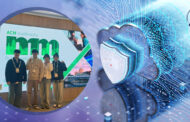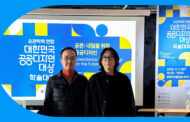UNIST is set to embark on a new adventure to enhance its global capabilities with the aim of being listed among the top 100 research-oriented universities in the world. To this end, UNIST President Yong Hoon Lee met with Dr. Nam Pyo Suh, the former President of KAIST and the Ralph E. and Eloise F. Cross Professor of Mechanical Engineering at the Massachusetts Institute of Technology (MIT), who is also best known for bringing reform and innovation in science and engineering education.
Besides more efforts to help strengthen global capabilities, President Lee also visited Cambridge’s Kendall Square, internationally known as the “most innovative square mile on the planet” and several major startup accelerators and incubators based in Chicago, Illinois. The visit was thought to be part of conducting benchmarking research for the design and construction of the Challenge Convergence Building (tentative name), which is scheduled to be completed in 2026.
In an effort to develop a greater understanding of research fronts and trends in the United States and foster meaningful international exchange, President Lee also attended the US-Korea Conference (UKC) on Science, Technology, and Entrepreneurship to be held in Washington D.C. from August 16 to 20, 2022.
On August 19, President Lee visited MIT in Cambridge, Massachusetts to advance his agenda, particularly for appointing Dr. Suh to serve on the UNIST President’s Advisory Council. Dr. Suh is well-recognized for his devotion and passion for his contribution in bringing vitality to science and engineering universities, while serving as the Head of the Department of Mechanical Engineering at MIT and the 13th and 14th President of KAIST. During this time, President Lee has also done immense work in bringing innovation to KAIST, while serving as the Vice President of KAIST.
President Lee plans to expand and apply Dr. Suh’s so-called ‘Innovation DNA’ strategy to UNIST in hopes to drive institutional innovation and capacity building. In particular, Dr. Suh’s international network is expected to help UNIST to strengthen its global capabilities. “Dr. Suh boasts a strong international presence,” noted President Lee. “His expertise across multiple sectors and functions, such as with MIT and the National Science Foundation (NSF) and various international networks built while serving as directors of universities throughout the world will be a great asset to strengthen our global capabilities.”
UNIST, which celebrates its 13th anniversary this year, is growing rapidly and becoming an internationally renowned research-driven university. President Lee finds that now it is time to increase UNIST’s presence and impact in the international arena through the promotion of international cooperation. UNIST will play an active role in the global scientific community as the ‘First Mover‘ for the development of ‘super-gap’ technology. To this end, UNIST has also set a goal of being listed among the top 100 research-driven universities in the world by 2027.
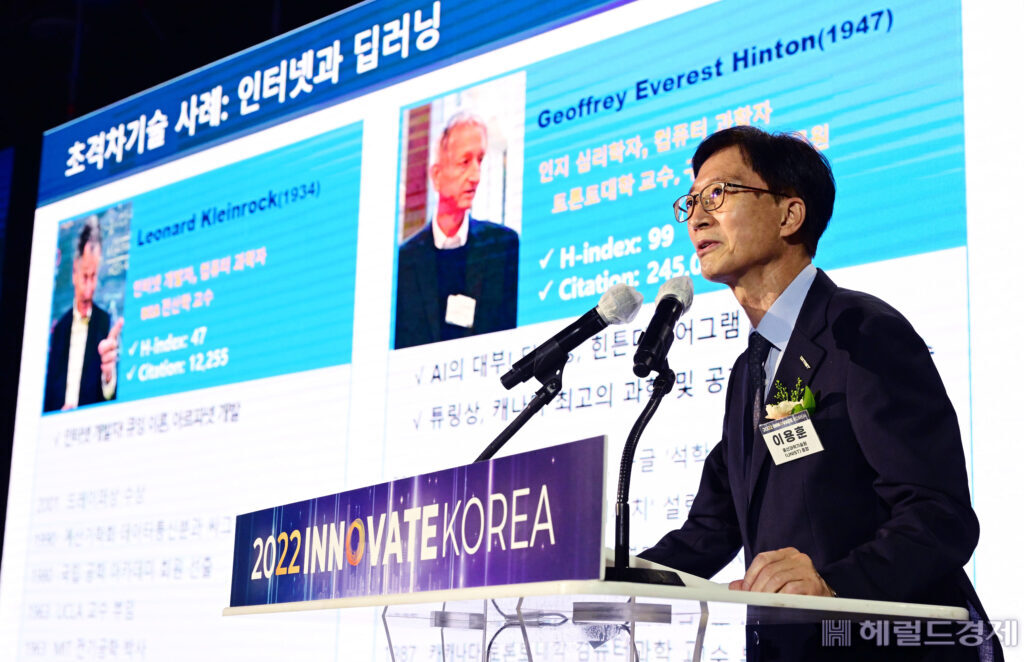
UNIST President Lee gave a lecture under the theme of ‘How to Secure Super-gap Technologies’ at the Innovate Korea 2022, held at Korea University Sejong Campus. In his lecture, President Lee emphasized that the growth of research-focused universities is the most important to secure super-gap technologies, and set a goal of UNIST to take the lead in making it a global research-oriented university. l Image Credit: Hae-mook Park, The Korea Herald
“With international cooperation at its current level, it is difficult to become one of the world’s top 100 research-oriented universities,” said President Lee. “We will pursue various international cooperation projects such as exchange students and joint research with First Mover.”
In an effort to strengthen UNIST’s international networks, President Lee plans to organize and run the ‘International Scholars Advisory Board‘ by meeting regularly with presidents of major universities and Nobel Prize winners as advisors. Dr. Nam Pyo Suh, the Cross Professor Emeritus at MIT, is the first member to be invited as a member of the UNIST President’s Advisory Council.
“International Scholars Advisory Board will help strengthen UNIST’s international capabilities in any form,” said President Lee. “We will periodically interact with Dr. Suh and implement his ‘Innovative DNA’ strategy, so that both UNIST’s operation and education system can be reorganized to match the world level.”
“To be a global ‘First Mover’ in science, technology, and innovation, one must have clear goals and vision, then what and why to innovate becomes clear and how to innovate can be promoted actively,” advised Dr. Suh. “Successful innovation begins with the pursuit of newness, yet with change, comes a challenge. Taking a leap forward is only possible when new progress and achievements are made through incremental innovation.”
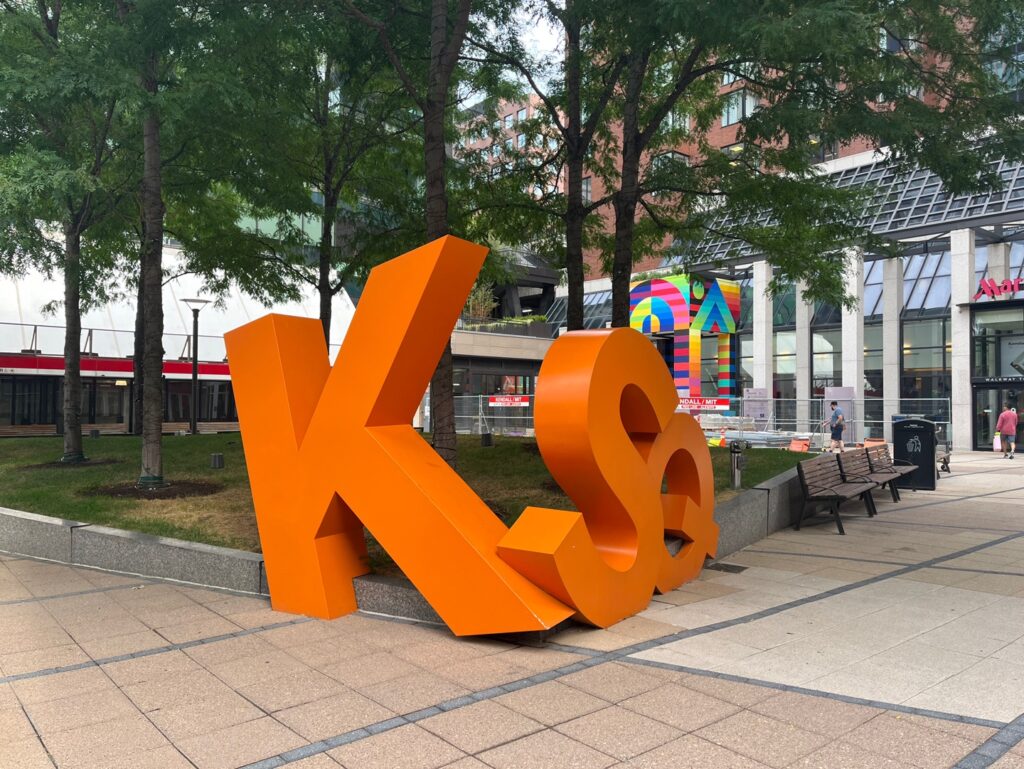
The KSQ sign at Kendall Square in Cambridge, Massachusetts. UNIST hopes to create a space like Kendall Square in Ulsan. l Image Credit: JooHyeon Heo
Meanwhile, the visit also included a two-day schedule in Chicago, the Midwest’s primary innovation hub and a short visit to Kendall Square in the city of Cambridge, part of the greater Boston Area that has grown into a major hub for biotech industry. During this visit, he also visited several major startup accelerators and incubators based in Chicago to conduct benchmarking research for the design and construction of the Challenge Convergence Building (tentative name), which is scheduled to be completed in 2026. This includes a short visit to Sherley Ryan AbilityLab, the first-ever translational research hospital that applies current research findings to patient care. At Kendall Square, he observed and collected various cases that could help establish the soon-to-be-launched ‘UNIST-UOU HST School’, as well as businesses in the biomedical sector to start up.


